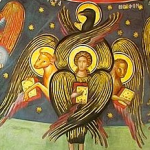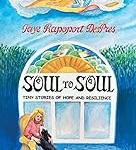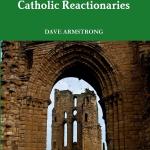This topic is kind of involved, and starting in midstream to boot. If you haven’t already, I recommend reading the first and second posts in this series before starting on this one.
… Oops
Before I proceed, I need to make a pretty substantial correction. In my post on the two-source hypothesis, I went over the background of the proposed Q document. Several days ago, I saw a comment from someone saying that I was wrong—Q was not supposed to underlie all three of the Synoptics, only to explain the shared material in Matthew and Luke. I rolled my eyes; everyone thinks they’re a manuscript critic, don’t they? I decided to set this person straight with some scholarship, aaand the first thing I pulled up showed that I was wrong and they were right.

What’s worse, and funnier, is that I genuinely don’t even know how I got this misconception fixed in my head. Maybe I picked it up from some other writer who didn’t know what they were talking about; maybe I accomplished the mixup in the privacy of my own subconscious. In any case, it never occurred to me to double-check it—so I’ve just been wrong about it, out loud, for years. This is pretty embarrassing, not merely because I made an elementary mistake, but especially in view of how much time I spend taking others to task for not examining their assumptions! Anyhow, I have two people to thank: myself, for getting me in this mess, and commenter Last Man on Earth, for getting me out of it.
In light of this, I must also concede that the Q hypothesis is considerably less ridiculous than I made it out to be. I’ve had a few days to think since discovering my error, and I think I still incline to disbelieve the Q hypothesis, but only as something for which I don’t find the evidence all that compelling (oral tradition seems like a more plausible explanation to me). I could be swayed by a good case.
I will now resume the argument from the place I left off.
Truth Versus Fact
Long since on Mars, and more strongly since he came to Perelandra, Ransom had been perceiving that the triple distinction of truth from myth and of both from fact was purely terrestrial—was part and parcel of that unhappy division between soul and body which resulted from the Fall.
—C. S. Lewis, Perelandra1
Part of interpreting any text is understanding its genre. I alluded to this issue briefly in a footnote to the first post in this series; let’s review.

The figure of Urizen from William Blake’s mythos; Urizen
represents reason, law, constraint, and self-righteousness.
Perhaps, this past summer, you went to see Michael Bay’s Transformers 3,087: Revenge of the Apocalypse, or whatever the most recent one was. Maybe you talked with friends afterwards about how leading starlet2 Khaeyceeigh DiGiorno’s3 acting wasn’t as good as in the last one, like she was phoning it in this time. But I’m willing to bet, no one said angrily that they felt betrayed because Miss DiGiorno had not admitted in this film, as they’d been hoping, that she is not really a Transformer. Consensus reality has weakened lately in this country, but there is still a general consensus that the Transformers franchise is fictional. And part of the idea of fiction is that it is not attempting to fool anyone; it is not factual, but “lie” is not the opposite of “fact” and does not apply to works of art, because their purpose is completely different from factual reporting (such as we expect from journalism, legal testimony, or the sciences).
Yet we do talk about works of art being true, or having truth, in some way. Often, this is because they articulate some emotional truth, especially if we had not heard it put into words before then. The abrupt horror of Oedipus at realizing what he has done to his city and his family, all by means of his best efforts to do right and help everyone around him—that effect is emotionally true to the horror of a sudden, irrevocable recognition of a horrible mistake. T. S. Eliot’s lines in Four Quartets convey the same feeling:
And last, the rending pain of re-enactment
Of all that you have done, and been; the shame
Of motives late revealed, and the awareness
Of things ill done and done to others’ harm
Which once you took for exercise of virtue.
Then fools’ approval stings, and honor stains.4
Yet it’s not clear what facts, what materially quantifiable phenomena, each of these words and sentences would be referring to. And that’s fine, because neither the myth nor the poem is claiming to be factual. However, having mentioned myth, we must take that word to bits as well.
A Cup and a Sword and a Tree and a Green Hill …
When we say myth, the first thing we think of is probably either Greek and Roman mythology, or of lies. The latter meaning is one of the stupider inheritances we have from the Enlightenment, and if I could excise the use of “myth” to mean “lie” from the English language, I would. It threatens to deprive us of a word with other and better uses; and anyway, we already have “lie.” For the purposes of this discussion, myth has nothing to do with lying.
Among the Greeks, Greek mythology didn’t have a special name, for the same reason that in this country when we visit a bookstore we don’t tell people we’re going to an “American bookstore.” They just called them μῦθοι [müthoi], “stories”—and this word denoted all stories. I’m using the term much more specifically than that here, to denote myth as a literary genre.5 Myths in this sense tend to be fantastical stories, often about the origins, nature, or fate of things, frequently involving deities. Now, there’s a widespread misconception that most or all ancient cultures believed their mythologies were literally true. There is very little reason to think this. As soon as we get any surviving documents explicitly discuss myth as something to believe or disbelieve, we find all sorts of attitudes to the question—about the same range of attitudes we find today toward, say, the “story of Thanksgiving.” Nearly everyone knows that the simplistic mythos we were taught in second grade is not really how the Pilgrims’ first winter in Massachusetts went: that is, certainly not in detail (it’s too sanitized for that) and possibly not in some of the broader strokes (even little details like whom the Pilgrims were primarily thanking have been disputed in recent years6). But there is a range of sentiments concerning the story: how much is true, which parts, what’s important about it, and how important it is. There are a few fundamentalist types who do seriously believe exactly what they were told in second grade to be an exhaustive account of the facts; there are a few skeptical types who don’t believe a word of it; but both of these seem to be more functions of the individual’s personality than of their intellect, and most people fall somewhere in between.
The same was true in the ancient world. When Livy recounted the arrival of Æneas in Italy in his history of Rome, and when Virgil did the same thing in the Æneid, they were not doing it for the same reason. It’s perfectly possible that both men thought Æneas historical (what we have of Livy suggests otherwise, but it’s possible); Æneas may represent some genuine historic connection between the peoples of the Ægean Sea and the Italian peninsula. But, if both Livy and Virgil had known for certain (as we do not) that there was no such person and no such connection, while Livy’s history would probably have been written differently, there’s every likelihood Virgil’s epic would have remained exactly the same, because the historicity of Æneas is not the point of the Æneid. Truth, fact, and myth can have complicated interrelations, and can coexist within a single narrative, but none is interchangeable with the other two.
So?
This may seem like an odd criterion to include. But the point is simply that we must take genre into account in evaluating any piece of ancient literature, the same as we do today. This is of course conventional wisdom among New Testament scholars, and always has been; but I think they have gotten into a habit of reading the Gospels through the lens higher criticism produced in the nineteenth century, during the flowering7 of liberal theology.
The idea that someone might care about a story because they thought it was true—this seems practically unimaginable to them. They’re so busy diagnosing agendas that the possibility of a person’s agenda being to tell the truth goes, in my experience, entirely unacknowledged outside evangelical and fundamentalist circles. The idea that the similarities in the Gospels might occasionally be there because they’re about the same people and events, and sometimes people remember things, and tell the truth about them—such simple-minded notions are not to be found in the august pages of New Testament scholarship. We can’t publish such radical nonsense! What would the head of theology at Tübingen say?
1For those unfamiliar: Perelandra is the second volume in C. S. Lewis’s sci-fi series, The Cosmic Trilogy (also known as The Space Trilogy, by people who clearly weren’t paying attention to the bit in the first book about how it’s far more fittingly “heaven” than “space,” of course I don’t have a bee in my bonnet about this, why do you ask). Its protagonist, Elwin Ransom, is kidnapped and taken to Mars in the first book, Out of the Silent Planet; Mars is inhabited by unfallen creatures—both hnau, i.e. incarnates, and eldila, angelic intelligences that guide the planets. While there, he learns Old Solar, formerly the common language of all hnau in our star system. (The earth is known in this language as Thulcandra, “the silent planet”: its ruling eldil revolted against God, and cut off his sphere from the others.) In the second volume, the eldila are forewarned that Venus (in Old Solar, Perelandra) is about to be mysteriously attacked by our planet’s corrupt archon. God grants the eldila the authority to counteract this by transporting Ransom there to warn the inhabitants, as he knows the language. Ransom discovers when he gets there that its hnau are the “Adam and Eve” of their world, still in their first innocence, and the imminent attack is to be its version of the Serpent.
2I assume people still say this
3Of course this is a real person, why would I make someone up
4“Little Gidding” III.85-90.
5The best discussion of myth as a literary genre that I’m familiar with comes from An Experiment in Criticism, also by C. S. Lewis. Sadly, we have no time to stop and read that entire book now, but I recommend it; it isn’t long (barely over a hundred and forty pages, in fact), and it’s a wonderful help to approaching literature.
6For the record: while I’m sure the Pilgrims were thanking the Wampanoag people for their invaluable assistance in surviving their early brutal time in Massachusetts, the idea that they were doing this rather than thanking God—if anybody has actually advanced it—doesn’t make sense in the context of all we know about the Pilgrims’ beliefs and habits, and making it an either-or is not a persuasive or needed thesis in the first place.
7I personally consider the flower a titan arum, but flower it did.















